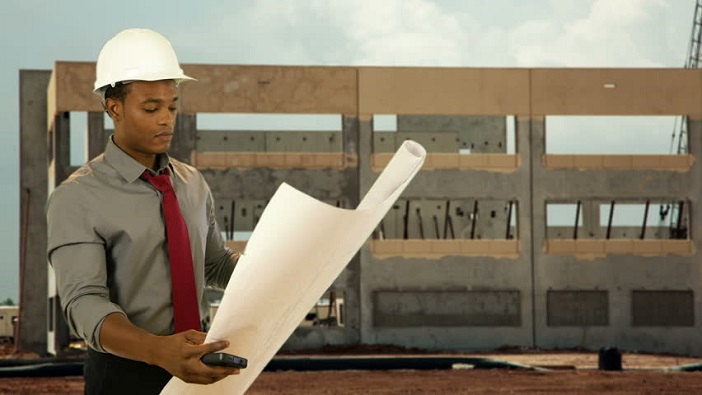Architect Salary Breakdown by Location and Seniority
Architect Salary Breakdown by Location and Seniority
Blog Article
Understanding the Diverse Occupation Paths Available for Aspiring Architect
As an ambitious Architect, you have a world of occupation courses waiting for you. Whether you're drawn to conventional style or the subtleties of sustainable design, there's a specific niche that straightens with your interests.
Conventional Design: Creating Structures and Structures
Conventional style concentrates on developing structures and frameworks that mix capability with visual allure. As you discover this area, you'll value the intricate balance between form and purpose. You'll learn to draw inspiration from historical styles, incorporating elements like symmetry, materials, and craftsmanship. Your layouts can mirror social heritage, showcasing neighborhood traditions while meeting modern demands.
You'll create abilities in composing, model-making, and website evaluation, enabling you to picture and interact your ideas efficiently. Engaging with customers, you'll require to comprehend their vision and translate it right into viable styles.
Additionally, building codes and sustainability practices are essential in your job, ensuring your structures are secure and ecologically friendly. As you expand in your job, you'll discover opportunities in residential, business, or perhaps remediation tasks, each offering one-of-a-kind difficulties. Accepting conventional style leads the way for a meeting occupation that pays homage to the past while forming the future.
Urban Planning: Forming Neighborhoods and Public Spaces
As an aspiring Architect, you can play a necessary role as a city coordinator, transforming just how communities interact and work. By employing neighborhood engagement methods, you'll guarantee that residents have a voice in forming their setting. Plus, incorporating lasting style concepts will assist develop spaces that not just fulfill today's demands however additionally secure the future.
Role of Urban Planners
While several could assume of designers as the single enthusiasts behind buildings, urban organizers play an essential duty in forming the wider landscape of neighborhoods and public spaces. By collaborating with numerous stakeholders, you'll assist develop parks, transportation systems, and domestic locations that promote social communication and ease of access. Your knowledge in spatial design and area dynamics permits you to imagine future growth while preserving social heritage.
Neighborhood Engagement Strategies
Reliable neighborhood engagement approaches are essential for metropolitan planners to assure that the voices of locals are heard and valued in the preparation process. To cultivate significant dialogue, you must prioritize open discussion forums and workshops where neighborhood participants can reveal their ideas and worries. Use studies and social networks to get to a wider target market, guaranteeing varied point of views are consisted of. Collaborating with neighborhood organizations can boost count on and promote deeper links. It is necessary to give clear details regarding suggested projects and decision-making procedures, permitting locals to really feel informed and equipped. By proactively listening and integrating responses, you'll produce spaces that show the community's demands, eventually causing even more successful and sustainable city environments. Accept openness and continual dialogue for long lasting effect.
Sustainable Style Principles
When designing urban rooms, integrating lasting style principles is crucial for developing settings that grow both ecologically and socially. Consider incorporating eco-friendly areas, like parks and gardens, to enhance biodiversity and enhance air top quality.
Designing with water conservation in mind is likewise vital-- consider rainfall gardens and absorptive surface areas to take care of stormwater. Involving area members throughout the preparation procedure warranties that the rooms you produce meet their needs and encourage social interaction. By welcoming these concepts, you'll contribute to dynamic, lasting city landscapes that profit everyone.

Landscape Style: Developing Sustainable Outdoor Settings
As you explore landscape architecture, you'll find vital layout concepts that create useful and lovely outdoor areas. Lasting practices play a crucial duty in making sure these environments thrive while minimizing environmental effect. Plus, you'll discover a variety of career chances that allow you to make an actual difference in exactly how individuals interact with nature.
Design Principles in Landscape
Comprehending design principles in landscape architecture is essential for producing lasting outdoor atmospheres that integrate with nature. You'll need to contemplate aspects like percentage, equilibrium, and scale to guarantee your layouts really feel natural and inviting. Furthermore, pay attention to seasonal changes, designing with products that match the surroundings year-round.
Sustainable Practices Overview
Lasting methods in landscape design not only concentrate on visual appeals but additionally focus on ecological health and resource preservation. By incorporating indigenous plants, you boost biodiversity and reduce the need for chemical fertilizers and chemicals. Implementing reliable watering systems assists conserve water and minimizes drainage, securing close-by environments. You can develop spaces that advertise soil wellness, such as exercising and using natural materials permaculture concepts. Furthermore, including environment-friendly infrastructure, like rainfall gardens and permeable pavements, help in stormwater administration and lowers metropolitan heat. You contribute to a healthier planet and offer areas that promote neighborhood link when you develop outside environments with sustainability in mind. Eventually, these techniques guarantee your styles profit both people and the atmosphere for several years to come.
Job Opportunities Exploration
With a strong foundation in sustainable practices, landscape design uses a selection of job courses that permit you to make a meaningful effect on the environment. You could work as a landscape designer, creating aesthetically pleasing and functional outdoor spaces, or specialize in ecological remediation, helping to revive damaged ecosystems. Urban planners frequently collaborate with landscape architects to create environment-friendly rooms in city setups, improving city livability. If you're passionate about education, consider coming to be a landscape style instructor, motivating future generations. Furthermore, you might work with nonprofits concentrated on environmental sustainability or engage in research study to introduce brand-new methods. Each course not only shapes gorgeous environments yet additionally promotes a healthier earth for future generations.
Sustainable Layout: Concentrating on Eco-Friendly Practices
As you explore your career in style, accepting green methods can set you apart in a competitive field. Sustainable style focuses on creating buildings that reduce environmental influence while enhancing passenger well-being. By including renewable products, energy-efficient systems, and sustainable structure techniques, you'll add to a greener future.
Begin by obtaining understanding of green qualifications like LEED or BREEAM, which can boost your credentials. Think about just how natural light, ventilation, and thermal efficiency can enhance design. Collaborate with designers and ecological specialists to introduce options that decrease waste and preserve resources.
Do not neglect the value of community involvement-- appealing local stakeholders can influence styles that harmonize web with the atmosphere. As customers increasingly prioritize sustainability, your experience in environmentally friendly methods will certainly not only draw in jobs however likewise meet your enthusiasm for accountable design. Accept this critical facet of the profession, and watch your career thrive.
Historic Preservation: Safeguarding and Bring Back Cultural Heritage
While you begin on your architectural journey, consider the necessary function of historic preservation in maintaining our cultural heritage. This area focuses on the protection and restoration of significant buildings, sites, and frameworks that inform the tales of our past. By involving in historical conservation, you'll assist guard the building heritage that shapes neighborhood identity.
As a historic preservation Architect, you'll analyze historic importance and assess the problem of structures. You'll function closely with preservationists and historians to assure authentic restoration strategies are employed. This occupation course allows you to mix creativity with research study, allowing you to create solutions that value original products and workmanship.
Your job not just contributes to sustainability by recycling existing buildings however also promotes a sense of pride within communities. Embracing this course will certainly assist you end up being a guardian of background, preserving the stories and aesthetic appeals that improve our lives.
Interior Design: Enhancing Indoor Spaces
Historic conservation and indoor architecture both share a commitment to boosting the built environment, however they concentrate on different aspects. While historic conservation stresses maintaining a structure's historic and social worth, interior architecture nos in on maximizing interior rooms for functionality and aesthetic appeals.
As an ambitious Architect, you'll find that interior architecture enables you to blend imagination with technological abilities. You'll make rooms that not only look good but also promote comfort and effectiveness. This field entails comprehending exactly how light, shade, and products engage within a room, influencing state of mind and use.
You'll deal with numerous jobs, from household homes to business workplaces, making sure that each atmosphere satisfies the requirements of its passengers. By prioritizing user experience, you can transform insides right into motivating and practical spaces, making a considerable effect on how people interact with their environments. Accept the chance to enhance interior settings and form the method people work and live.
Industrial Design: Combining Capability With Aesthetic Appeals
Industrial design plays an important role in developing items that effortlessly blend aesthetics with capability, making certain that what you utilize daily is not just aesthetically appealing but additionally functional. As an aspiring Architect, you can engage yourself in this area, focusing on developing everything from furnishings to consumer electronic devices. Your work involves recognizing individual needs, products, and producing processes, permitting you to develop innovative remedies that improve day-to-day experiences.
In industrial style, you'll frequently work together with designers, makers, and marketing experts, ensuring that your layouts are not just beautiful yet likewise possible. This profession path provides a dynamic atmosphere where imagination fulfills usefulness, making it a fulfilling selection for engineers interested in shaping the products of tomorrow.
Often Asked Concerns
What Educational Accreditations Do I Need to Become a Designer?
To end up being a designer, you'll need a professional degree in style, usually a Bachelor's or Master's. Additionally, you'll need to finish a teaching fellowship and pass the Architect Enrollment Examination to practice legally.
Are There Certification Requirements for Various Building Career Paths?
Yes, there're accreditation requirements for numerous architectural paths. Architect. You'll require why not try these out to pass examinations, total web teaching fellowships, and in some cases seek specialized training, relying on your picked emphasis, like landscape style, city layout, or historical conservation
What Software Program Abilities Are Crucial for Engineers Today?

How Can I Gain Practical Experience While Researching Design?
You can acquire practical experience by interning at building firms, taking part in style competitions, offering for neighborhood projects, or teaming up with schoolmates on real-world tasks. These chances improve your abilities and develop important connections in the market.
What Task Opportunities Exist Outside Conventional Architecture Firms?
You can check out numerous job opportunities outside conventional style companies, like city preparation, interior decoration, landscape style, construction monitoring, property advancement, or even functions in sustainability consulting. Each deals unique difficulties and rewards.
Whether you're drawn to typical design or the subtleties of lasting style, there's a niche that lines up with your interests.When creating city spaces, incorporating sustainable layout principles is critical for creating atmospheres that thrive both ecologically and socially.As you explore landscape style, you'll discover vital layout concepts that develop gorgeous and practical outdoor spaces.Understanding layout concepts in landscape design is necessary for developing lasting exterior settings that integrate with nature.In commercial layout, you'll often collaborate with suppliers, marketing experts, and designers, making sure that your layouts are not just stunning yet likewise practical.
Report this page